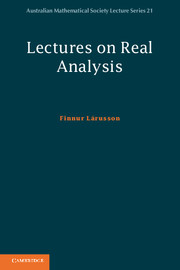The complete ordered field of real numbers
The real numbers form an ordered field ℝ containing the rationals with an additional property called completeness that the rationals do not satisfy. We need some preliminary definitions to be able to say what completeness means.
2.1. Definition. An upper bound for a subset A ⊂ ℝ is an element b ∈ ℝ such that a ≤ b for all a ∈ A. If A has an upper bound, then A is said to be bounded above.
A lower bound for a subset A ⊂ ℝ is an element b ∈ ℝ such that b ≤ a for all a ∈ A. If A has a lower bound, then A is said to be bounded below.
If A is bounded above and bounded below, then A is said to be bounded.
2.2. Example. Consider the interval [0, 1] = {x ∈ ℝ : 0 ≤ x ≤ 1}. It is bounded above, for example by the upper bound 1. The upper bounds for [0, 1] are precisely the numbers b with b ≥ 1. Thus 1 is the smallest upper bound for [0, 1], and it is of course also the largest element of [0, 1].
Now consider the interval (0, 1) = {x ∈ ℝ :0 < x < 1}, also bounded above, for example by 1. It has the same upper bounds as [0, 1]. Namely, if b ≥ 1 and x ∈ (0, 1), then x < 1 ≤ b, so b is an upper bound for (0, 1).
